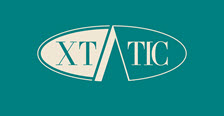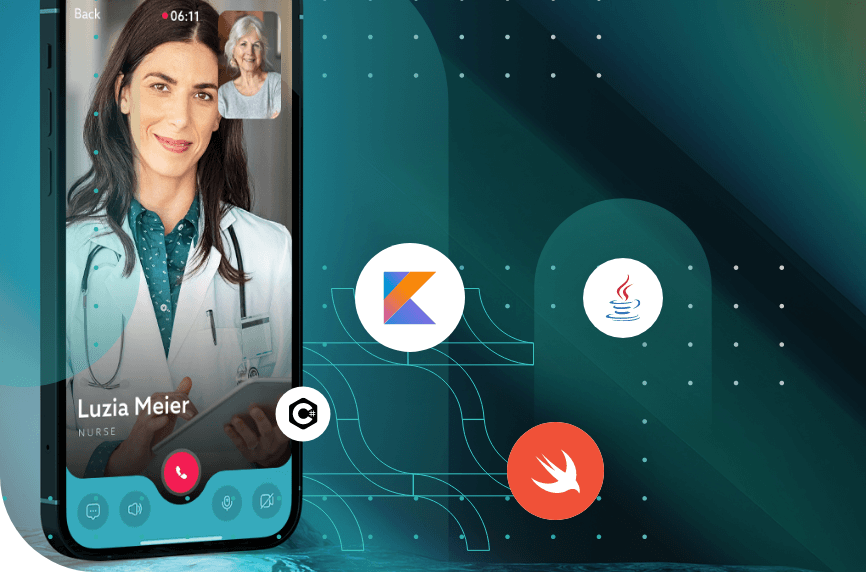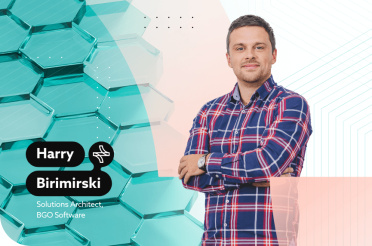The global health market was valued at $45.7 billion in 2020, and there is an expectation for its compound annual growth rate (CAGR) to be 17.6% from 2021 to 2028.
The key principles for the continuous growth of the market are the support of government initiatives in the healthcare industry and the increasingly complex innovative medicines that are implemented. An example of such initiatives is virtual nurse apps and the digital transformation of the healthcare sector, which are gaining popularity.
What is a virtual nurse app?
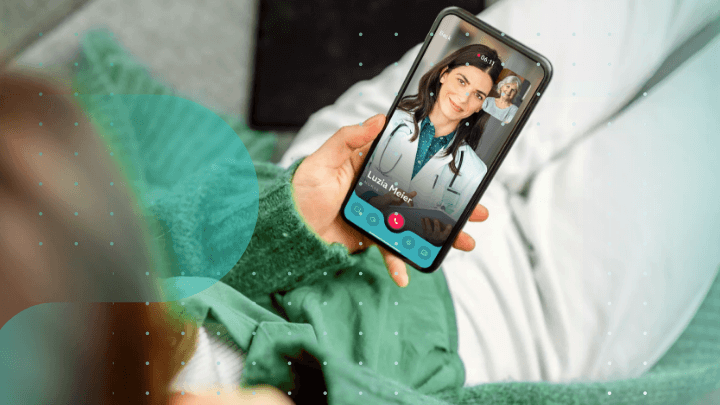
A virtual nurse assistant app is nothing more than healthcare software intended to help patients take advantage of the possibilities of modern technologies when it comes to their medical issues.
A big step in utilizing technology in the healthcare industry and to be more specific, digital technology, was in 2013 when a virtual nurse app like Sensely came out. The way it used artificial intelligence caught both the healthcare market and app developers.
That is exactly what was to transform the industry’s business strategies. But to know what they did right with their nursing app, we have to look at trends in digital technologies in healthcare app development and the nursing profession as a whole.
Internet of medical things (IoMT) wearable gadgets
The Internet of Medical Things has become a basic necessity in almost every virtual nurse application. Its primary function is to integrate wearable gadgets and mobile devices that can be used to transmit patient data to healthcare professionals.
Collecting patient information can then be cataloged into medical records and used for smart machine learning algorithms for better diagnosis and treatment plans. Such medical data usually includes blood pressure, heart rate, and weight.

Bring your vision for a virtual nurse app to life
Stay ahead in the rapidly evolving health tech industry while building your app by putting your trust in BGO Software’s software experts.

Telemedicine
Telemedicine is a way for patients to take a hold of their own health management using digital tools where healthcare professionals can consult them virtually.
This way, medical practitioners will have more time to focus on severe cases and not risk the downside of neglecting their other patients. Patients can receive medical assistance from their healthcare providers at home.
Furthermore, during the COVID-19 pandemic, we saw that visiting your doctor is not always an immediate possibility.Being able to contact them via computer, messaging, and video calls proved to be a tremendous benefit for healthcare services.
It was also a big step for the digital health domain. A clear sign of this is the projected growth of the telemedicine market from 2019 all the way to 2030. Starting at 50 billion USD and expected to grow to a staggering 460 billion USD by the end of the decade.
Virtual nurse avatar
One thing that virtual nurse apps are said to never be able to replace is the human interactions that a patient can find in a human being. But they are not used to replace people in this case.
As we have mentioned, it is not always possible to visit your medical organization despite your need for treatment and assistance. What virtual nurse avatars do is that they are animated to look and behave as much as possible like a person.
Firstly, to put people at ease, and secondly, to allow them to feel better communicating with someone who wants to help them with their problem.
Blockchain
Blockchain is usually used to manage financial data and has recently found purchases in the digital healthcare market as well. What it does is gather and write information into interconnected blocks in a way that each block contains data about the previous one.
Its goal is to ensure that a system of data or even a database cannot be simply tampered with or destroyed.
It works perfectly with cloud-based solutions because of the protection it offers to patient data and the inhibition of information leakage. Over recent years, using blockchain technology has come to mean credibility for medical apps because it ensures that time and resources are not wasted. In addition, HIPAA and GDPR regulatory compliance is guaranteed when using blockchain.
Cloud-based solutions
During the development of a virtual nurse application, it is essential to consider the location of storage for patient health information.
Electronic health records usually require a lot of space, and integrating a cloud-based system with them is usually a great solution. Not only medical data is stored. Having a solid infrastructure is also perfect for keeping track of insurance schemes and medical bills.
Cloud-based solutions ease the world of medical providers and practitioners by creating a unified system where information is easily accessed by necessary personnel. It is also strictly protected by blockchain, and this is why integrating the two is a step in the right direction.
How to build a virtual nurse app?
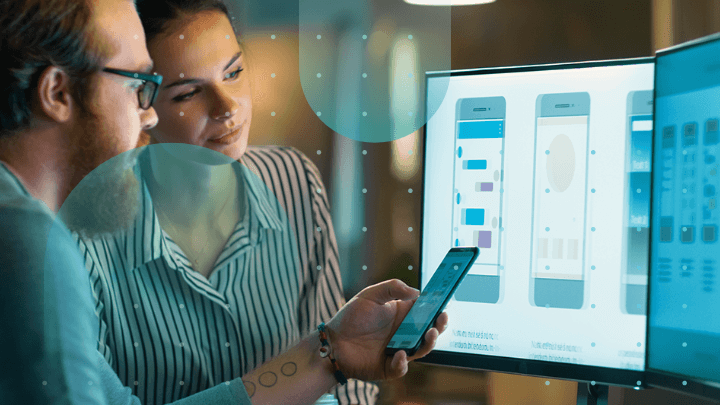
Mobile app development is not an easy process, especially when it comes to virtual healthcare assistants. Many fields are involved, and a development team has to consist of a variety of experts in most of them.
One such group of people working on the virtual nurse assistant would be an experienced IT development team that will build the application. They would comply with all laws and regulations and make sure the software has its significance and individuality in the precision medicine market.
Something that cannot be overlooked is for the healthcare organization’s in-house technicians to be familiar with all necessary protocols and standards.
Another part of a development team has to consist of healthcare staff like doctors and nurses that can provide valuable insight into the virtual nurse technology. They can provide medical knowledge and offer ways the app can manage a patient’s health.
There are, of course, a lot of ways this all can be realized. Though it might seem complicated, there are a couple of steps that can be followed to have a smoother development process for your virtual nurse app idea.
Step 1: Starting with a strategy
Business strategies are the best place to start before the manufacturing process. You have to first know exactly what the company expects the app layout to be and what kind of features it has to integrate into itself. A strategy like that is what establishes the connection between business requirements and application performance.
What is usually analyzed at this point is the primary users of the application, how the software ecosystem would integrate with the view of the comprehensive health provider, and what it would enable users to do with it.
The main reason for an app to be used is so that it can provide a certain function to its users and for virtual nursing apps we have to know whether those users are patients, doctors, nurses, or facility managers.
Step 2: Necessary requirements
A big chunk of the research and development phase is figuring out the requirements of the healthcare organization such as data analysis and data processing laws, user needs, compatibility, legacy systems, and regulatory compliance.
What is then done is to estimate the necessary time for the project and project cost based on all the gathered criteria and resources. The resources include the size of the team, the workflow, and the technologies available.
Step 3: Analysis and planning
The way virtual nurse applications work is that they get integrated into already existing software. To do so, there needs to be a planning phase. In this step, the development team has to be extremely clear with the healthcare organization on every move they make to combine the systems.
Such integration can also lead to some downtime on some features that are already used by the healthcare provider for appointment management or other medical services. What makes the entire process easier in this step is identifying the necessary data and patient records that need to be migrated into the new system.
Step 4: Prototypes and design
Creating prototypes and settling on the design is the step where developers consult the healthcare organization and beta users on the app layout. Users can review a version of the software and give feedback on what can be improved, removed, or added.
They can test some of the functions and give back their initial impression and thoughts on how everything works together.
Step 5: Writing the code
The part about writing the code itself is what is also called the development phase of any app creation. During the writing phase all the different parts of the code come together to build the whole software that will drive the application.
Here the developers start to further test the application as a whole to see if all of the functions are responding how they should.
Step 6: User testing
At the user testing point in the app development process, it is figured out if the software provides the users with a positive experience and it delivers on everything it is meant to do.
You can’t skip it because it gives developers the things they have to work on before releasing the app. It also gives them ideas on how to improve the functions that are already in place. The post-development issues are fixed and cleared before application deployment.
Step 7: Release and maintenance
After deploying an app it is of vital importance that you have a team to continue its maintenance. Backup protocols are created in order to ensure the reliability and stability of the application. Here the legacy system is also integrated with the development app.

Make sure your nurse app meets all technical and medical standards
Take the first step to making sure you build and run your virtual nurse app.
What are the main reasons for creating a virtual nurse app?

Mitigating nurse burnouts
Virtual nurse apps are not made to replace human nurses, which manage real-life patient outcomes and are a valuable part of precision medicine and the public health systems.
One of the main reasons for developing a virtual nurse app is to mitigate burnout. Nurses can get exhausted from a poor work-life balance, which may lead to a negative impact on patient outcomes and patient care.
Health management is what nurses are strongly connected with, and having an aid in the face of the application is something that can improve their day-to-day. Entering information into patient reports for big data and regional and local assessments burdens nurses.
The application can assist them with its automation of such a process and the help of voice recognition. Keeping track of prescribed medication, the symptoms of patients with respiratory and other diseases, and data management can also be handled by the application.
Data collection and analysis
Information is one of the building blocks of developing a medical treatment plan. Having to gather data is what is usually left up to doctors and nurses, and it can sometimes be quite burdensome and laborious.
That is why leaving that part of the process up to a virtual nurse application can optimize the workflow, and health practitioners can focus on patient care.
Having medical issues or chronic diseases diagnosed early can limit out-of-pocket costs. A conscientious health provider knows that medical problems left undiagnosed can get more expensive over time.
Cost evaluations have shown that by using a virtual nurse app, real-world data can be analyzed easier and get more results. Therefore such an application is a means of optimizing digital solutions in a favorable regulatory environment.
Elderly care
One of the primary global health challenges is providing medical care to elderly patients living in more rural areas. Financially pressed health systems are oftentimes not able to give resources to handle such major-risk patients, and that’s where digital therapeutics come in handy.
Further digital innovation has brought with it significant therapeutic advances when it comes to disease management from afar.
In the COVID–19 pandemic, for example, elderly patients were isolated with no way of receiving medical assistance, and having a virtual nurse app in a case like that, where they could communicate with their doctors, was something that solved one of the truly global health challenges.
What are the key features every virtual nurse application should have?

Having a profile
Every virtual nurse application has to have a login feature where users have their own accounts. This way, they can access their personal medical information. Patients can keep track of lab results, other medical notes their doctor has put in, or even for the potential clinical trial participants, they can monitor the trial’s progress.
A vital part of this feature is for there to be an emergency button on the main logic screen that can send out a signal to a healthcare provider in a moment of crisis. This button would be meant to bypass the login screen and get in direct contact with a medical practitioner or emergency service when a patient needs it.
Education
The application can have a whole section dedicated to coaching patients. There could also be medical knowledge laid out, concerning life sciences research, hybrid clinical trials, and other things that concern patients, including even payment management. All of this information can be given through videos, images, blogs, and articles.
Chatbots
In some cases, patients don’t have a way to visit their healthcare practitioners but still require medical assistance. In such situations, chatbots come in handy. Some patients don’t have the time to go to their healthcare provider or the means of getting there. Chatbots solve this problem by bringing the healthcare provider to them in a way.
Chatbots decrease the cost of transportation and also the time both patients and practitioners spend on a certain problem. Institutions that also suffer from limited human resources can use this function to decrease the load on their nurses and allow them to attend to patients that need their full expertise.
Data collection
Having at your disposal telemedicine tools like wearable gadgets and more can make the process of gathering medical data significantly easier. They keep track of heart rate, blood pressure, weight, and much more and enter such information directly into the patient’s record.
With symptom analysis patients don’t have to visit their doctors so often and still get feedback on their individual medical issues through their virtual health assistant.
Furthermore, the pharmaceutical industry is heavily reliant on information gathering when it comes to drug discovery and drug development. Pharma companies need real-world evidence and data to develop drug exposure models and further improve drug research by upholding pharmaceutical industry trends. Virtual nurse applications can deepen the industry’s role globally in regard to the pharmaceutical market.
The pharma industry also uses big data analytics to lead initiatives in cell and gene therapies and manage rising drug prices. The pharmaceutical sector constantly experiences organic market developments but there always have to be drug pricing measures through health technology assessment.
Appointment scheduling
Managing drug costs is of vital importance to the healthcare industry, but being able to manage patient appointments will directly assist medical professionals in their work. It can also allow them to focus on more important things when it comes to providing healthcare assistance.
The way this is accomplished is by patients logging into their app and having slots on a calendar from which they can choose when to book an appointment with their doctor. A virtual health app also keeps track of the doctor’s schedule.
Push notifications and reminders
Putting a patient’s own health management into their own hands has some amazing benefits, but it also bears some risks. Patient’s can sometimes forget to take their medicine, adhere to scheduled appointments, or miss checkups.
The way a virtual nurse application solves this problem is by alerting patients when necessary to engage with the app itself or by visiting a healthcare facility. It can also remind doctors and administrators of certain tasks that need to be handled, optimizing their workflow.
Creating a virtual nurse application is a great way to step into the growing digital healthcare market. But to know how to develop such an app, one must first consider the current trends of the industry and take into account the features, benefits, and challenges.

Whether you’re a startup, a Fortune 100 company or a government organisation, our team can deliver a solution that works for you.
BGO Software
Before all of that, a healthcare organization must have a software partner with years of experience in medical application development. That is the best way to ensure success when building a virtual nurse app.
